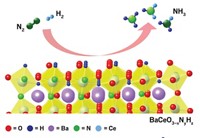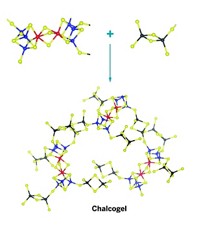Advertisement
Grab your lab coat. Let's get started
Welcome!
Welcome!
Create an account below to get 6 C&EN articles per month, receive newsletters and more - all free.
It seems this is your first time logging in online. Please enter the following information to continue.
As an ACS member you automatically get access to this site. All we need is few more details to create your reading experience.
Not you? Sign in with a different account.
Not you? Sign in with a different account.
ERROR 1
ERROR 1
ERROR 2
ERROR 2
ERROR 2
ERROR 2
ERROR 2
Password and Confirm password must match.
If you have an ACS member number, please enter it here so we can link this account to your membership. (optional)
ERROR 2
ACS values your privacy. By submitting your information, you are gaining access to C&EN and subscribing to our weekly newsletter. We use the information you provide to make your reading experience better, and we will never sell your data to third party members.
Synthesis
Organic Photocatalyst Helps Split Water
Catalysis: Graphitic carbon nitride looks promising as a catalyst to harness sunlight to produce hydrogen fuel from water
by Neil Savage
September 10, 2014

Inexpensive water-splitting catalysts could lower the costs of generating hydrogen for fuel cells. Towards that end, scientists in England now have integrated a stable, low-cost organic catalyst into a water-splitting system (J. Am. Chem. Soc. 2014, DOI: 10.1021/ja506386e). The researchers made the catalyst, graphitic carbon nitride, from abundant, cheap urea.
Water-splitting techniques usually mimic plant photosynthesis, using photocatalysts to drive a two-step process to generate O2 and H2 from water. First, light activates a catalyst, such as a metal oxide, which then oxidizes water into O2 and hydrogen ions. The metal oxide absorbs electrons in the process and then transfers them to a redox mediator, such as sodium iodide, dissolved in the water. This mediator transfers the electrons to a second photocatalyst. Light excites the electrons in the second catalyst, which then reduces hydrogen ions to produce H2.

Junwang Tang of University College London says the trick lies in finding the right material to use as a catalyst in each half of the reaction. Organic semiconductors have high photocatalytic activity, he says, but they tend to be a lot less physically stable than inorganic semiconductors. But other researchers recently found that graphitic carbon nitride (g-C3N4), an organic semiconductor, remains stable in both acid and alkaline conditions.
So Tang’s team decided to test g-C3N4 as a catalyst on the hydrogen side of the process. To make g-C3N4, Tang’s group thermally decomposed urea, an inexpensive compound owing to its abundance. This approach, he says, increased the degree of polymerization of the g-C3N4 units. Greater polymerization means more surface sites for the reduction reaction, allowing electron transfer to take place quickly and easily.
The researchers tested the g-C3N4 with two metal oxides previously developed for the oxidation process, bismuth vanadate (BiVO4) and tungsten trioxide (WO3), and found they got the best results with the tungsten.
The reaction is still not very efficient; they reduced 200 mL of water in 10 hours, consuming less than 1% of the total water in their system but producing an ideal hydrogen to oxygen ratio of 2:1. Tang hopes the efficiency can be improved. For example, reducing the particle size of the WO3 would provide more surface area for reactions to take place. Tang’s group is also working to increase the polymerization of the carbon nitride material.
Kazunari Domen of the University of Tokyo says carbon nitride is indeed a promising photocatalyst for large-scale use because its elements are so abundant. He says Tang’s work provides a good example of how carbon nitride can be used, though the researchers should aim at improving the material’s efficiency at turning absorbed photons into usable electrons, “which appears to be considerably low for practical use.”




Join the conversation
Contact the reporter
Submit a Letter to the Editor for publication
Engage with us on Twitter